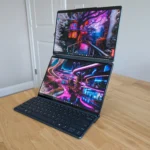
Liquid-crystal display technologies are enhancing the ways that electronics look and feel. Enhanced screens are used by professionals in every industry who need higher quality images and videos to show their clients and workers. Since there are countless, new LCD technologies available, it’s important to learn the basics of LCD screens.
LCD Screens are Found in Many Electronics
Flat-panel LCD screens are mostly found in computers and televisions. This type of screen is also built into smaller, handheld digital electronics like watches, clocks, calculators and vehicle dashboard displays. Liquid-crystal displays are found on illuminated indoor and outdoor signs that are designed to withstand harsh weather conditions, such as heavy rain, snow and ice. Overall, any electronic device that has a screen display can be manufactured with liquid crystals.
LCD Screens Can Be Recycled
Most people think that if damaged LCD screens cannot be repaired, they must be thrown away. Any type of LCD display can be recycled, but the main problem is that LCD-specific recycling programs are not commonplace. There are many recycling centers that accept LCD panels in various conditions. An incentive may be given to LCD owners because the screens are more energy efficient and less polluting than traditional CRT displays are.
There Are Different Styles of LCDs
LCD has evolved significantly from monochrome and passive-matrix types from the 1980s. The active-matrix liquid-crystal display provides the highest quality imagery with the highest resolution. The multicolor LCDs are made from various technologies. An example is the twisted nematic (TN) display that contains twisting and untwisting LCDs. The chip-on-glass (COG) technology consists of a display with an integrated driver chip on the glass. Several additional technologies are in-plane switching (IPS), field sequential color (FSC) and fringe field switching (FFS).
LCDs Are Smaller and Lighter in Weight
Liquid-crystal displays are designed to be thinner and lighter in weight than large, heavy CRT display screens. LCDs are manufactured into dozens of small screen sizes that appear in watches, calculators, etc. The screens are flexible and take on different shapes to accommodate the unique shapes of modern electronics.
LCD flat screens are found everywhere from airports to train stations along with retail stores and private homes. Traditional non-LCD types are being replaced with LCD technology that is proven to be clearer, higher quality and longer lasting. Learn more about the benefits of buying this type of screen and the main style that you should choose.
Discover more from TechBooky
Subscribe to get the latest posts sent to your email.






